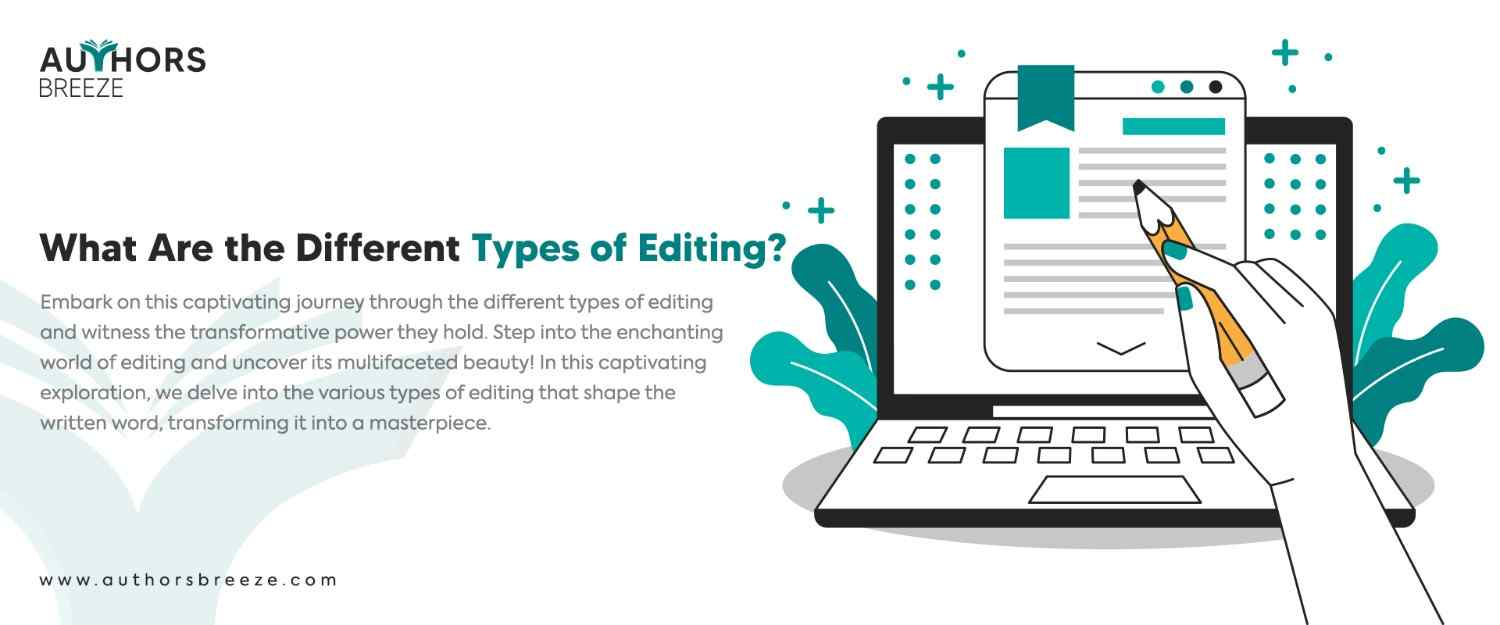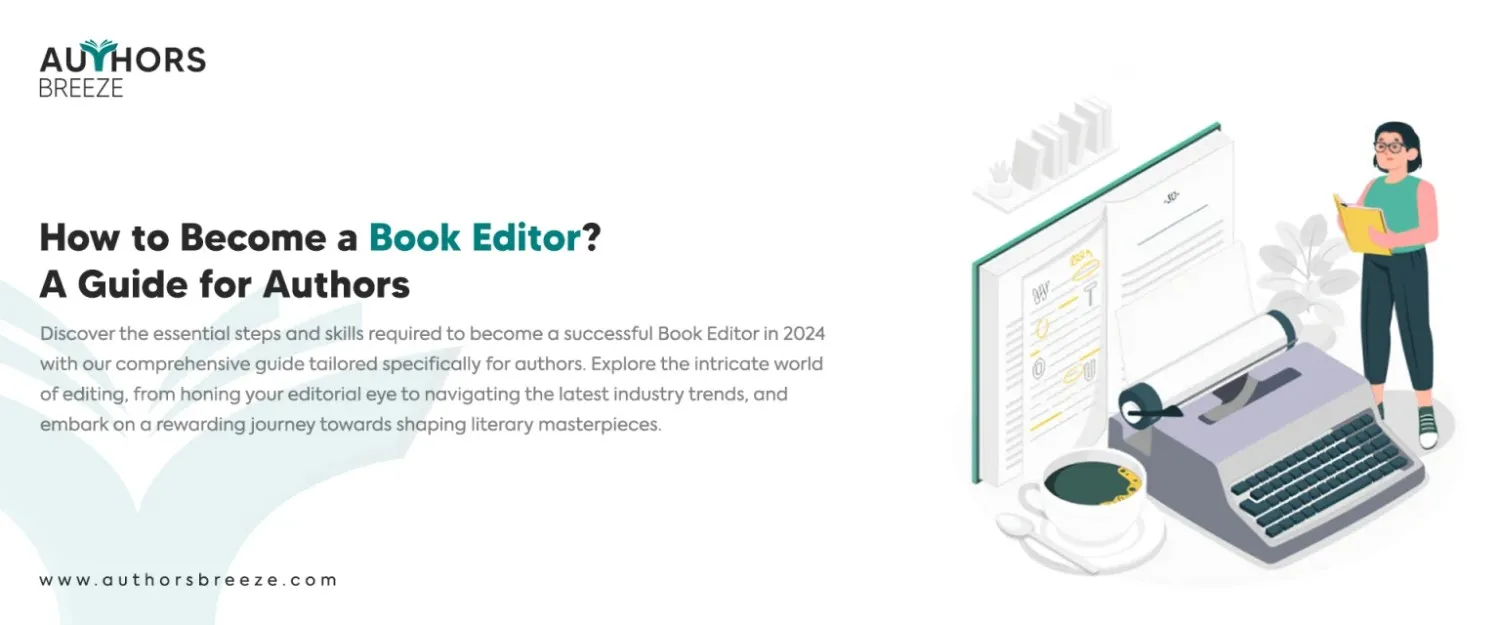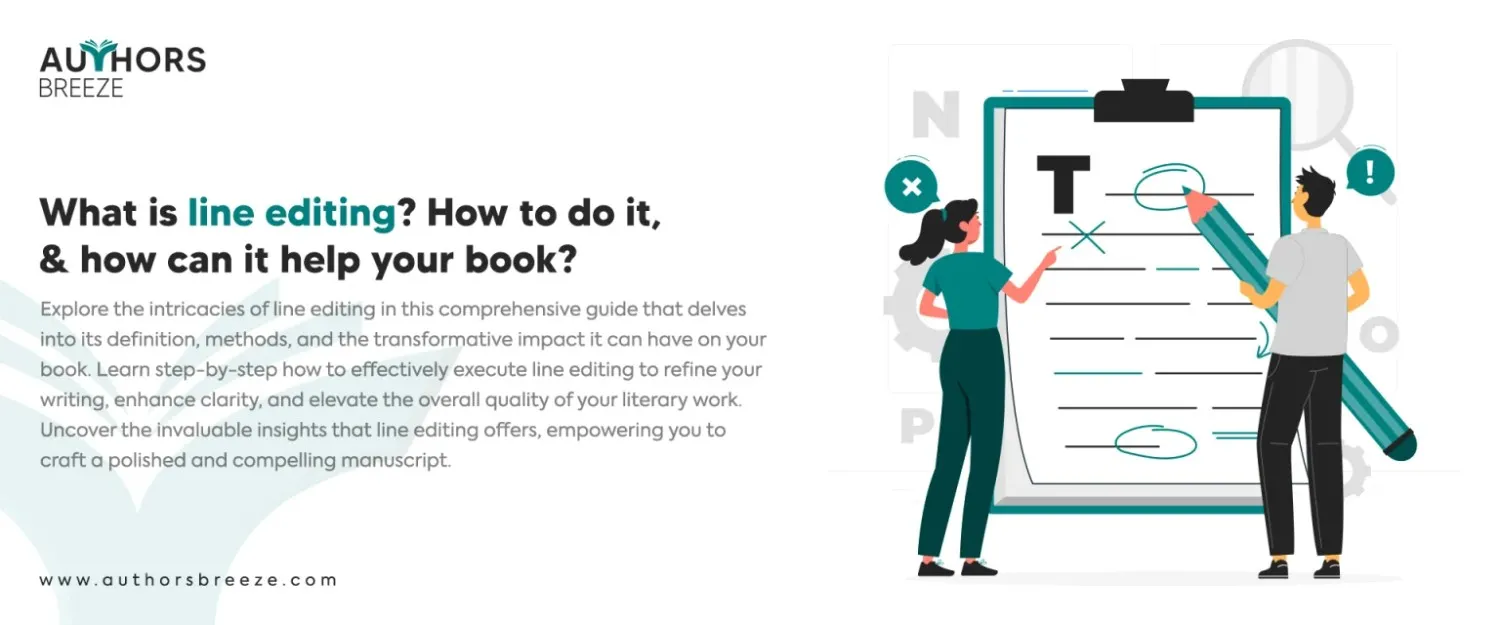Don’t Have Time to Read? Listen to this Article Instead!
Editing is a crucial aspect of the writing process. It involves refining and improving a written piece to make it more readable, engaging, and impactful. Whether you’re writing ebooks, a novel, a research paper, or a blog post, editing can significantly enhance the quality of your work. In this blog, we will explore the different types of editing and their purposes. So, let’s begin
What is Editing?
Editing is basically reviewing a written piece to identify areas that need improvement. It can range from minor changes, such as fixing typos and grammar errors, to more extensive revisions, such as reorganizing paragraphs or rewriting entire sections. The goal of editing is to refine the writing. Editing makes writing more effective. Moreover, it ensures that writing meets the desired quality standards of book publishers.
The Importance of Editing
Editing is essential for several reasons. For example:
- It ensures that the message you’re trying to convey is clear and concise.
- It helps you organize your thoughts, eliminate redundancies, and identify and correct errors in grammar, spelling, and punctuation
- Editing can make your writing more engaging and persuasive, thereby capturing the reader’s attention and holding it to the end.
- It is crucial for maintaining a professional image, whether you’re writing for personal or business purposes.
The Types of Editing
There are six major types of editing. Each type of editing serves a specific purpose and involves different levels of intervention. Let’s explore each type in more detail. So you will know what type of book editing service you need.
1- Developmental Editing
Developmental editing is the most extensive type of edit. It involves a comprehensive review of a written piece’s structure, content, and style to ensure it’s coherent, engaging, and achieves its intended purpose. A developmental edit can be helpful in the early stages of writing to help authors refine their ideas and ensure that their writing aligns with their goals.
The purpose of a developmental edit is to provide constructive feedback that helps authors improve their writing. It’s handy for authors struggling to articulate their ideas or those needing assistance developing a consistent tone and style. Developmental editors may also provide feedback on the overall organization and flow of the writing to ensure that it’s easy to follow and that the message is clear.
Developmental editors provide feedback on a range of issues, including:
Structure
It includes the overall organization of the writing, the order of the paragraphs, and the flow of ideas.
Content
Developmental editors may provide feedback on the accuracy and relevance of the content and suggest additional research or sources if necessary.
Tone and Style
Editors may provide feedback on the tone and style of the writing, ensuring that it’s consistent throughout the piece.
Character Development
This type of feedback is often provided for works of fiction, where the developmental editor may provide suggestions for character development or plot points.
Audience
Developmental editors may provide feedback on whether the writing is appropriate for the intended audience and suggest changes to make it more accessible or engaging.
Examples of when developmental editing may be necessary
A developmental edit may be necessary when the writer:
- Wants to develop a consistent tone and style throughout the piece.
- Wants to ensure that the content is accurate and relevant.
- Has trouble organizing their thoughts or putting them into words.
- Wants to ensure that the writing flows smoothly and is easy to follow.
- Wants to improve the engagement of their work.
2- Strcutural Editing
Structural editing comes after you do a developmental edit. It can also be done side by side with the developmental edit. In a structural edit, the editor looks at the narrative, storyline, and characters to ensure that they are working perfectly together. This type of edit is done to see if the storyline or plot can be improved.
Examples of when structural editing may be necessary
A writer does a structural edit when he wants:
- to ensure that the writing pace is constant.
- everything to make sense.
- to make sure that the writing style is suitable for the writing piece.
- to ensure the voice and tenses are the same throughout.
3- Substantive Editing
Substantive editing focuses on improving a written piece’s overall clarity, coherence, and effectiveness. This type of edit involves a thorough review of the text at the sentence and paragraph level to ensure the writing is clear, concise, and engaging. The purpose of a substantive edit is to enhance the readability and impact of the writing without changing the writer’s intended message.
While a developmental edit focuses on the structure and content of the writing, substantive edit focuses on improving the style and language. Substantive editors work with the writer to refine the writing and ensure it’s consistent, polished, and easy to read. This type of editing can be useful for article writers who have already developed their ideas but need help expressing them clearly and effectively.
Examples of when substantive editing may be necessary
A substantive edit may be necessary when the writer:
- Wants to improve the clarity and flow of their writing.
- Wants to ensure that their writing is engaging and persuasive.
- Needs help identifying and correcting awkward or unclear sentences.
- Wants to improve the overall quality of their writing.
- Wants to ensure that their writing adheres to a specific style guide.
4- Copy Editing
Copy editing is a type of editing that focuses on improving the mechanics and formatting of a written piece. It involves a careful review of the text to ensure that it’s free of errors and adheres to specific style and formatting guidelines. The purpose of a copy edit is to produce a polished and error-free final draft that’s ready for publication or dissemination.
A copy edit can correct a wide range of errors, including:
Spelling and Grammar
Copy editors check for spelling and grammar errors, including punctuation, capitalization, and verb tense.
Style and Formatting
Copy editors ensure that the writing adheres to a specific style guide and that the formatting is consistent throughout the piece.
Fact-Checking
Copy editors verify the accuracy of the information presented in the writing.
Consistency
Copy editors ensure that the writing is consistent in terms of terminology, style, and tone.
Clarity
Copy editors check for confusing or awkward phrasing and suggest improvements to enhance clarity.
Examples of when copy editing may be necessary
A copy edit may be necessary when the writer:
- Has completed their writing and wants to ensure it’s polished and error-free.
- Is submitting their work for publication and wants to adhere to specific style and formatting guidelines.
- Is writing for a specific audience and wants to ensure that the writing is clear and easy to read.
- Has incorporated feedback from developmental and substantive editing and wants to ensure that the final draft is free of errors.
- Has translated their writing from another language and wants to ensure that the text is free of errors and adheres to the conventions of the target language.
5- Line Editing
Line editing is also known as language editing. It is a type of edit that focuses on the use of language in a written piece. It involves a thorough review of the text at the word and sentence level to ensure the writing is clear, concise, and compelling. The purpose of a line edit is to enhance the overall quality of the writing, improving the tone, style, and impact of the language used.
While a copy edit focuses on mechanics and formatting, a line edit is concerned with the use of language. Line editors review the text to identify and correct issues with the style, tone, and effectiveness of the language used. They may suggest improvements to sentence structure, word choice, and syntax to enhance the overall readability and impact of the writing.
Examples of when line editing may be necessary
A line edit may be necessary when the writer:
- Wants to improve the clarity, conciseness, and effectiveness of their writing.
- Wants to enhance the tone and style of their writing to make it more engaging and effective.
- Needs help identifying and correcting word choice, syntax, and sentence structure issues.
- Wants to ensure that their writing is appropriate for the intended audience.
- Wants to ensure their writing is easily understood and effectively communicates their intended message.
6- Proofreading
Proofreading is the final stage of the editing process. It involves reviewing a written piece for any errors or typos that may have been missed during previous phases of editing. A certified proofreader aims to ensure that the final draft is free of any mistakes and is ready for publication or dissemination.
While a copy and line edit focus on improving the quality of the language used in a written piece, proofreading focuses on identifying and correcting any remaining errors or mistakes. A copy edit ensures consistency, accuracy, and adherence to style and formatting guidelines. In contrast, a line edit enhances the overall quality of the language used in a written piece. On the other hand, proofreading is the final check for any errors missed during previous editing stages.
Examples of when proofreading may be necessary
Proofreading may be necessary when the writer:
- Is submitting their work for publication and wants to ensure it’s polished and error-free.
- Is submitting their work for an academic assignment and wants to ensure that it’s free of any errors that may impact their grade.
- Has completed the writing and has gone through previous editing stages but wants to ensure that the final draft is free of errors.
- Is submitting a job application or cover letter and wants to ensure that it’s free of any mistakes that may impact their chances of getting hired.
- Is submitting a grant application or other important document and wants to ensure it’s free of any errors that may impact their chances of getting funded.
What Type of Editing Do You Need?
Now you know different types of edits and how they can help you, you can choose the right one keeping your specific needs in mind. For example, suppose you are struggling with the overall structure and organization of your piece. In that case, you may benefit from a developmental edit. You can benefit from a substantive edit if you want to improve the effectiveness of your language use.
FAQs
How Long Does The Editing Process Usually Take?
The length of an edit can vary widely depending on the type of it, the size of the written piece, and the skill level of the writer. A developmental and substantive edit can take longer as they involve more significant changes. They require more back-and-forth between the editor and the writer. A copy edit, line edit, and proofreading are typically faster and can be completed within a shorter timeframe.
Can Editing Really Make A Significant Difference In The Quality Of My Writing?
Yes, an edit can make a significant difference in the quality of your writing. It helps to improve the overall structure, clarity, and effectiveness of your writing, as well as correct errors and mistakes. Suppose you want to ensure your writing is polished and professional. In that case, an edit can help you achieve your intended goals and make a positive impact on your readers.
Conclusion
The different types of editing are developmental editing, substantive editing, copy editing, line editing, and proofreading. These types of editing can help writers improve their writing in several ways. You can better target your efforts and achieve desired results if you understand the different types of editing and their purposes.





